1.
Introduction
Predator-prey model is one of basic interspecies relations for ecological and social system [1]. The more complex biochemical network structure and food chain are based on the predator-prey model [2]. The study of Lotka and Volterra [3,4] has opened the way to study the dynamics of the predator-prey systems. After that, Gause and Smaragdova also proposed a well-known Gause-type predator-prey model. Kolmogorov first focused on the qualitative analysis of this Gause-type predator-prey model in 1972. Freedman [5] introduced the generalized autonomous Gause model, which comes from accounting for periodic changes of the environment. Gause-type predator-prey models have been widely applied to describe some population models [6,7,8,9]. For example, Hasik [6] considered the generalized Gause-type predator-prey model
here g(x) represents the increase in prey density. When the natural environment is relatively bad, the mortality rate of the population is higher than its birth rate, so the g(x) here can get a negative value. p(x) represents the amount of prey consumed by a single predator per unit time. q(x)−γ represents the growth rate of the predator, and the same as g(x), q(x)−γ can also be taken to a negative value. Ding et al. [7] considered the periodic Gause-type predator-prey system with delay
where x(0),y(0)≥0 are the prey and the predator and obtained the positive periodic solution of this system (1.2) by using the continuation theorem.
For the past few years, more and more researchers are interested in the dynamic behavior of predator-prey systems with Allee effect. The Allee effect describes that the low population is affected by the positive relationship between population growth rate and density, which increases the likelihood of their extinction. Terry [10] considered predator-prey systems with Allee effect and described how to extend the traditional definition of effective components and population Allee effect for a single species model to predators in the predator-prey model. Cui et al. [11] focused on the dynamic behavior and steady-state solutions of a class of reaction-diffusion predator-prey systems with strong Allee effect. Cai et al. [12] explored the complex dynamic behavior for a Leslie-Gower predation model with additive Allee effect on prey. Without considering the influence of Allee effect on prey, the model has a unique global asymptotically stable equilibrium point. However, considering the influence of Allee reaction on prey, the model has no definite positive equilibrium point [12]. Baisad and Moonchai [13] were interested in a Gause-type predator-prey model with Holling type-Ⅲ functional response and Allee effect on prey as follows
Using the linearization method, they gave the local stability of three equilibrium types and also carried out a numerical simulation of the results. Guan and Chen [14] studied the dynamical analysis of a two species amensalism model with Beddington-DeAngelis functional response and Allee effect.
The study of the dynamics of a harvested population is a topic studied in mathematical bioeconomics [15], inside a larger chapter dealing with optimal management of renewable resources. The exploitation of biological resources and the harvesting of interacting species is applied in fisheries, forestry and fauna management [15,16,17]. Etoua and Rousseau [16] studied a generalized Gause model with both prey harvesting and Holling response function of type Ⅲ:
where the eight parameters: r,k,m,a,c,d,h are strictly positive and b≥0. Through the following linear transformation and time scaling
Laurin and Rousseau[17] transformed the model (1.4) into the simplified system with the number of parameters reduced to five
with parameters
And the Hopf bifurcation was studied in [16,17]. Du et al. [18] considered a general predator-prey model with prey and predator harvesting and proved that the predator-prey system has at least four positive periodic solutions. In addition, some other predator-prey models have been studied widely [19,20,21,22].
In this paper, we consider a generalized Gause-type predator-prey model with Allee effect, Holling type Ⅲ functional response and harvesting terms
where x=x(t) and y=y(t) represent the population sizes of prey and predator at time t, respectively. The size can represent numbers of individuals or density in the unit space of the population. To ensure biological significance, the parameter of K is positive, and a, b, c, H1, H2, m, p, r, s are positive T−periodic functions. The meaning of the parameters in system (1.6) is given as follows:
∙ a is the amount of prey at which predation rate is maximal.
∙ b is the predator population decays in the competition among the predators.
∙ c is the natural per capita death rate of the predator.
∙ K is the environmental capacity of the prey.
∙ m is the minimum viable population.
∙ p is the conversion efficiency of reduction rate of the predator.
∙ r is the growth rate of the prey.
∙ s is the maximum per capita consumption rate.
In system (1.6), the Allee effect is defined by the term r(t)(1−x(t)K)(x(t)−m(t))x(t) and the Holling type-Ⅲ functional response is represented by the term s(t)x2x2(t)+a2(t). This Holling type-Ⅲ functional response describes a behavior in which the number of prey consumed per predator initially increases quickly as the density of prey grows and levels off with further increase in prey density [13]. H1(t) and H2(t) describe the harvesting rate of prey and predators. We consider four important assumptions as regards the interactions between prey and predator:
∙ the prey population is affected by the Allee effect,
∙ the functional response is Holling type-Ⅲ,
∙ the influence of artificial harvest is considered on predator and prey, and
∙ the predator population decays in the competition among the predators is investigated.
In this paper, we establish some conditions to ensure that system (1.6) has at least two positive periodic solutions. We outline the format for the rest of this paper. In Sect. 2, we describe several technical lemmas. In Sect. 3, using a systematic qualitative analysis and employing the Mawhin coincidence degree theory, we obtain that system (1.6) has at least two positive T−periodic solutions of system (1.6).
2.
Preliminaries
In this section, we will give relevant definitions of the Mawhin coincidence degree theory [23] and several technical lemmas.
Let both X and Y be Banach spaces, L: DomL⊂X⟶Y be a linear map and N: X×[0,1]⟶Y be a continuous map. If ImL∈Y is closed and dimKerL=codimImL<+∞, then we call the operator L is a Fredholm operator of index zero. If L is a Fredholm operator with index zero and there exists continuous projections P: X⟶X and Q: Y⟶Y such that ImP=KerL and ImL=KerQ=Im(I−Q), then L|DomL∩KerP:(I−P)X⟶ImL has an inverse function, and we set it as KP. Assume that Ω×[0,1]∈X is an open set. If QN(¯Ω×[0,1]) is bounded and KP(I−Q)N(¯Ω×[0,1])∈X is relatively compact, then we say that N(¯Ω×[0,1]) is L−compact.
Next, we will give the Mawhin coincidence degree theorem.
Lemma 2.1. ([23,24]) Let X and Y be two Banach spaces, L: DomL⊂X⟶Y be a Fredholm operator with index zero, Ω∈Y be an open bounded set, and N:¯Ω×[0,1]⟶X be L−compact on ¯Ω×[0,1]. If all the following conditions hold
[C1] Lx≠λNx, for x∈∂Ω∩DomL, λ∈(0,1);
[C2] QNx≠0, for every x∈∂Ω∩KerL;
[C3] Brouwer degree deg{JQN,Ω∩KerL,0}≠0, where J: ImQ⟶KerL is an isomorphism.
Then the equation Lx=Nx has at least one solution on ¯Ω∩DomL.
Lemma 2.2. ([19]) Let x>0, y>0, z>0 and x>2√yz. For functions f(x,y,z)=x+√x2−4yz2z and g(x,y,z)=x−√x2−4yz2z, the following assertions hold:
(ⅰ) f(x,y,z) and g(x,y,z) are monotonically increasing and monotonically decreasing with respect to the variable x∈(0,∞);
(ⅱ) f(x,y,z) and g(x,y,z) are monotonically decreasing and monotonically increasing with respect to the variable y∈(0,∞);
(ⅲ) f(x,y,z) and g(x,y,z) are monotonically decreasing and monotonically increasing with respect to the variable z∈(0,∞).
Throughout this paper, we denote by C[0,T] the space of all bounded continuous functions f: R→R, and denote by C+ the set of all functions f∈C and f≥0. For the convenience of statement, we use the notations as follows
3.
Existence of positive periodic solutions
In this section, we will establish the existence results of at least two positive periodic solutions for the system (1.6).
Theorem 2.1. Assume the following conditions hold:
(H1) (pMu+2u−2+(aL)2−cL)2>4bLHL2;
(H2) (pLu−2u+2+(aM)2−cM)2>4bMHM2;
(H3) the algebra equation system
has finite real-valued solutions (uk∗,vk∗), k=1, 2,..., n, satisfying
where
Then system (1.6) has at least two positive T−periodic solutions.
Proof of Theorem 2.1.. Suppose (x(t),y(t))∈R2 is an arbitrary positive of system (1.6). Let x=eu(t), y=ev(t), it follows from system (1.6) we can obtain
where ˙=ddt.
Let
be equipped with the norm
where X and Y are Banach spaces, T is the transpose.
Taking z∈X and then we will define operators of L, P and Q as follows.
Firstly, let
It is clear that
that is dimKerL=dimR2=2. Next we calculate ImL. Let
Integrating both sides of this equation, we have
thus
From
we can obtain y(t)=z(t), that is
is closed in Y. Obviously, ImL∩R2={0}.
Considering P, Q are both continuous projections satisfying
Let
then, we get P(z) is a constant. Here, we denote it by
Secondly, let
then, we have
i.e.
Hence,
Thirdly, for ∀z∈Y, z1(t)=z(t)−Q(z), we're going to verify z1(t)∈ImL, i.e. ∫T0z1(t)dt=0. Here
that is
Moreover, we can obtain
i.e.,
So L is a Fredholm operator with index zero, which implies L has a unique inverse. We define by KP: ImL⟶KerP∩DomL the inverse of L.
By simply calculating, we have
Define N: X⟶Y by the form
where
Thus
and
Let Ω⊂X be bounded. For ∀z∈Ω, we have that ‖z‖≤M1, |u(t)|≤M1 and |v(t)|≤M1.
Next, we see that QN(¯Ω) is bounded.
and
It is immediate that QN and KP(I−Q)N are continuous.
Consider a sequence of function {z}⊂Ω. We have the following inequality for the first function of KP(I−Q)Nz.
For another function, we have similar inequalities as follows
Hence the sequence {KP(I−Q)Nz} is equicontinuous. Using the periodicity of the functions, we know that the sequence {KP(I−Q)Nz} is uniformly bounded.
An application of Ascoli-Arzela's theorem shows that {KP(I−Q)N(¯Ω)} is compact for any bounded set Ω⊂X. Since QN(¯Ω) is bounded, we conclude that N is L−compact on Ω for any bounded set Ω⊂X.
Then, considering the operator equation Lx=λNx, as follows
where λ∈(0,1). Let
Through simple analysis, we have
From (3.3), we can find that
and
In view of (3.4), we have
then, we get
which implies that
Similarly, we can discuss the range of eu(η1) from (3.6)
A direct calculation gives
so we can obtain
From (3.5), we have
and
then, we get
By (3.7), we obtain
and
this implies that
And then, in view of (3.5) and (3.7) we have
that is
or
From (3.7), we obtain
i.e.
In view of Lemma 2.2, we can find that v−<l−<l+<v+. Thus, we have
and
that is
Similarly, we get
It is easy to know that u±,v±,l± are independent of λ. Consider the following two sets
Obviously, Ωi∈X and ¯Ω1⋂¯Ω2=∅. So Ωi's (i=1, 2) satisfy the condition [C1] of Lemma 2.1.
Next, we show that QNz≠0, for ∀z∈∂Ωi∩KerL=∂Ωi∩R2 (i=1,2).
If it is not true, then there exists (u,v)T∈∂Ωi, such that
By virtue of the mean value theorem, there exists two points tj∈[0,T] (j=1, 2) satisfying
So, we obtain
and
which contradicts (u,v)T∈∂Ωi∩R2. So the condition [C2] in Lemma 2.1 holds.
Then, we check the condition [C3] in Lemma 2.1. Define the homomorphism J: ImQ⟶KerL, Jz≡z. From [H3], we have
This implies that the condition [C3] in Lemma 2.1 holds too. Note that, Ω1 and Ω2 satisfies all conditions of Lemma 2.1. Therefore, system (1.6) has at least two T−periodic solutions.
Here, we would like to give two remarks.
Remark 2.1. If we take H1(t)=0,H2(t)=0 and b(t)=0, i.e., system (1.6) without considering the harvesting terms of prey and predator, as well as the predator competition, we find that the system (1.3) in [13] is the system (1.6).
Remark 2.2. In [16] and [17], the authors only considered the Gause model (1.4) and (1.5) with prey harvesting h1, respectively, but they don't investigate the influence of the predator harvesting. In fact, the influence of the predator harvesting is very important in biological populations and bioeconomics, especially in fisheries management etc.
4.
Conclusions
In this paper, we are concerned with a Gause-type predator-prey model with Allee effect, Holling type Ⅲ functional response and the artificial harvesting terms, which are very important in biological populations and bioeconomics. Four important assumptions as regards the interactions between prey and predator is considered. By applying the Mawhin coincidence degree theory, we obtain the existence of multiple positive periodic solutions for the predator-prey model.
Acknowledgments
We express our sincere thanks to the anonymous reviewers for their valuable comments and suggestions. This work is supported by the Natural Science Foundation of China (Grant No.11771185). The first author supported by Postgraduate Research and Practice Innovation Program of Jiangsu Province (Grant Nos. KYCX18-2091, KYCX20-2082 and KYCX20-2206).
Conflict of interest
The authors declare no conflict of interest in this paper.











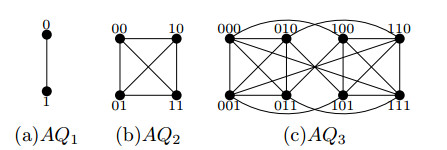
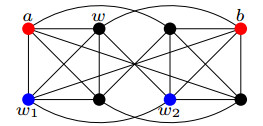


























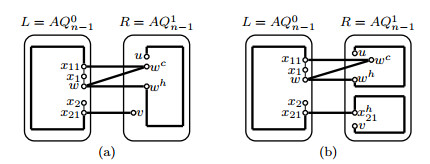
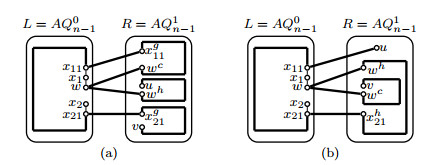

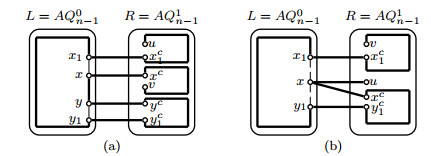
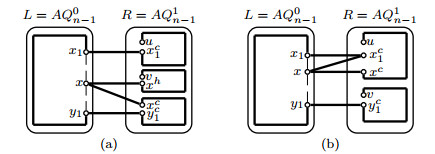



 DownLoad:
DownLoad: